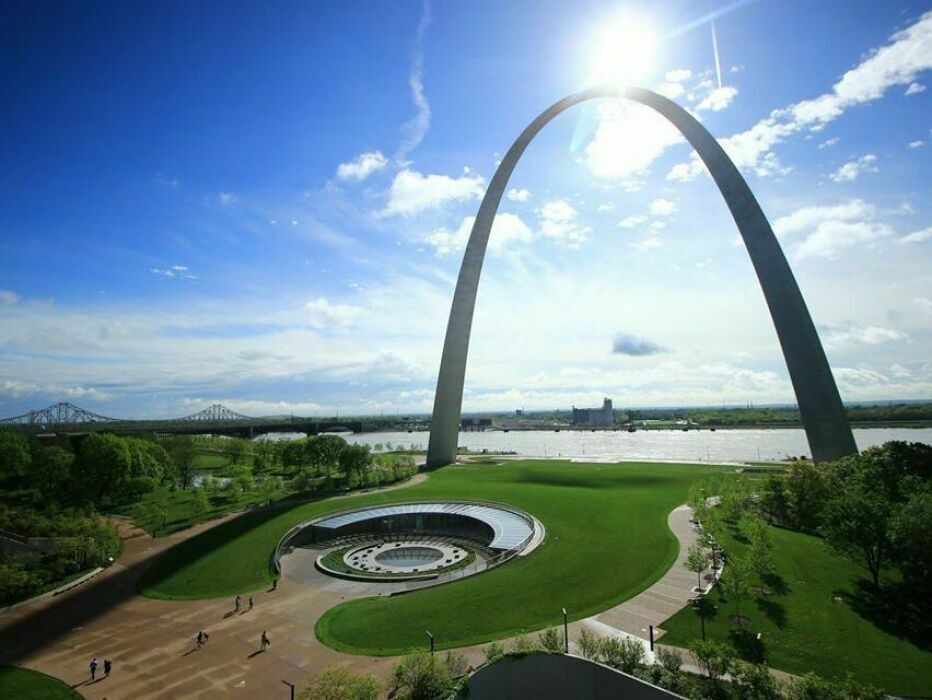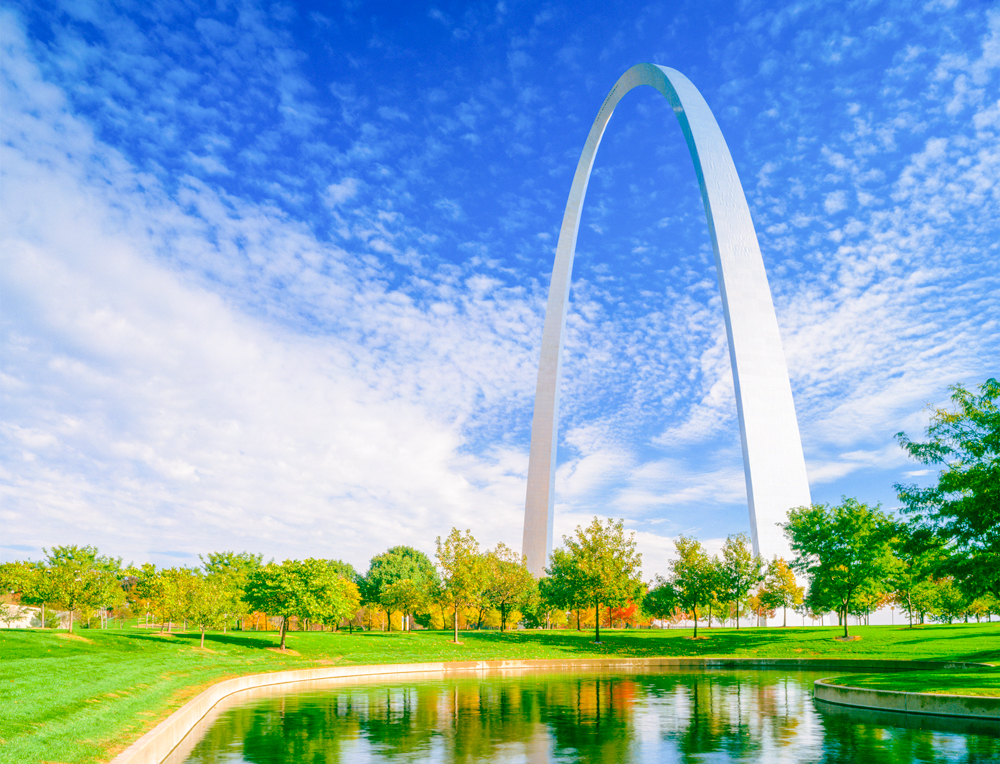The Gateway Arch National Park: A Top Destination in St. Louis
The Gateway Arch National Park: A Top Destination in St. Louis
Blog Article
Discover the Historical Value of Entrance Arc National Forest in St. Louis, MO
The Portal Arc National Forest in St. Louis, Missouri, acts as an extensive emblem of America's historical narrative, enveloping styles of westward growth and expedition. This building marvel, completed in 1965, not only honors essential events such as the Louisiana Purchase and the Lewis and Clark Exploration but additionally shows the wider aspirations of a nation in makeover. As we explore its complex significance, one have to think about how this iconic framework has affected both the social material of St. Louis and the collective memory of the United States. What much deeper tales lie under its imposing shape?
The Birth of the Gateway Arc
Commonly related to as a famous icon of St. Louis, the Gateway Arc was developed as a monument to recognize the westward expansion of the USA. The idea for the Arc arised during the 1930s in the middle of discussions regarding revitalizing the riverfront area. Engineer Eero Saarinen's style was picked in 1947 after a national competition, mirroring both modernist visual appeals and historic value.
Building started in 1963, using stainless steel to produce a streamlined, minimalist type that climbs 630 feet into the sky. The framework's special hyperbolic form was intended to represent the entrance to the West, embodying hope and possibility. The Arch was finished in 1965, and its commitment occurred on October 28, 1965, marking a turning point in American architectural history.
In 2018, the area surrounding the Arch went through significant renovations, changing it right into Portal Arch National Park. This update improved site visitor accessibility and interaction, strengthening the Arc's duty as a main social site. The Entrance Arch not only stands for St. Louis yet additionally works as a testament to the nation's trip, standing as a sign of motivation and cumulative memory.
Sign of Westward Expansion
The Portal Arc stands as a powerful sign of westward development in the United States, encapsulating the spirit of expedition and ambition that identified the 19th century. Set Up in St. Louis, Missouri, the Arch celebrates the city's function as a crucial starting factor for inhabitants heading westward along the Oregon and Santa Fe Trails.
As pioneers ventured into the undiscovered regions, they carried with them desires for success and brand-new beginnings, driven by the concept of Manifest Fate. The Arch transcends plain building charm; it symbolizes the triumphs and challenges encountered by those who sought opportunity in the vast, unidentified frontier.
The framework's design stimulates the picture of an entrance, welcoming travelers and dreamers alike to check out the possibility of the American West. It functions as a suggestion of the transformative journey that formed the nation, noting the transition from a mainly agricultural society to a growing land of advancement and industry.
Building Technology and Style
Amazing in its design, the Portal Arch is an exemplar of architectural technology that effortlessly blends kind and function. Designed by architect Eero Saarinen and architectural engineer Cass Gilbert, this legendary monument stands at 630 feet, making it the highest arch worldwide and a testament to modern-day design prowess. Its hyperboloid form not only produces an aesthetically striking silhouette versus the St. Louis skyline but also serves an essential structural objective, distributing weight equally and improving security.
Built from stainless-steel, the Arch's sleek, reflective surface area captures the changing light throughout the day, creating a dynamic visual experience. The selection of products and cutting-edge building strategies, consisting of using prefabricated areas, helped with the Arch's completion in 1965, despite the challenges positioned by its enthusiastic design.
Visitors can rise to the observation deck using a special tram system, experiencing scenic sights of the Mississippi River and the city listed below. The combination of visual charm and useful layout exemplifies Saarinen's vision of producing a monolith that not only honors America's westward development but likewise stands as a site of architectural achievement in its own right.
Cultural Effect On St. Louis
Positioned in the heart of St. Louis, Portal Arch National Park functions as a crucial social example for the city and its homeowners. The Arch is not merely a building marvel; it symbolizes St. Gateway Arch National Park parking. Louis's historic function as an entrance to the West and mirrors the city's rich heritage. Its visibility has fostered a feeling of pride amongst residents and has become an essential component of the city's identification
The park attracts countless visitors yearly, contributing significantly to the neighborhood economic climate and fostering a vivid cultural scene. Occasions, celebrations, and educational programs focused around the Arch advertise neighborhood interaction and social exchange, while the surrounding landscape acts as a celebration room for varied populations.
Furthermore, the Portal Arch has motivated plenty of musicians, filmmakers, and musicians, embedding itself in the social fabric of St. Louis. It has actually been included in various types of media, signifying resilience and development. By bridging the past with the here and now, Gateway Arch National Forest not just celebrates St. Louis's historic story however additionally continues to shape its social advancement, making it a sign of ideas for future generations.

Portal Arch in American Memory
A symbol of American passion and exploration, the Portal Arch holds a popular place in the cumulative memory of the country. Developed by engineer Eero Saarinen, the Arch was completed in 1965 and stands as a testimony to America's westward growth and the spirit of the frontier. Its streamlined, modernist style contrasts with historic structures, capturing the significance of development and progression that characterizes the American experience.
The Arch not just honors the Louisiana Acquisition and the Lewis and Clark Exploration however also symbolizes the battles and accomplishments of many individuals that added to the nation's growth. It works as a focal factor for nationwide satisfaction, attracting countless site visitors yearly who look for to get in touch with this emblem of American history.

Conclusion
Finally, Entrance Arc National Park works as a powerful icon of America's westward growth and the historic narratives related to it. Its building innovation and style show the goals of a country, while its social influence reverberates within the city of St. Louis and beyond. Gateway Arch National Park parking. As a monument to the Louisiana Acquisition and the Lewis and Clark Expedition, the Portal Arch proceeds to motivate and inform future generations concerning the transformative trip of the United States
Please visit one of our local supporters - Axis Spine And Orthopedics Center
Report this page